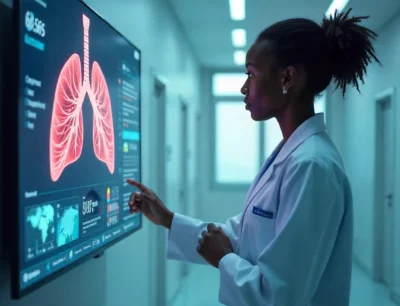The Future of Respiratory Diagnostics Starts with This AI Innovation
L&T Tech and NVIDIA revolutionize lung care with AI-powered digital twins—enabling faster, smarter, and more accessibl
Notice: Test mode is enabled. While in test mode no live donations are processed.

L&T Tech and NVIDIA revolutionize lung care with AI-powered digital twins—enabling faster, smarter, and more accessibl

The Vatican gathers doctors and ethicists to explore how AI can transform healthcare while protecting human dignity and

AI and 5G are revolutionizing healthcare—enabling real-time care, smarter diagnostics, and connected systems that put
